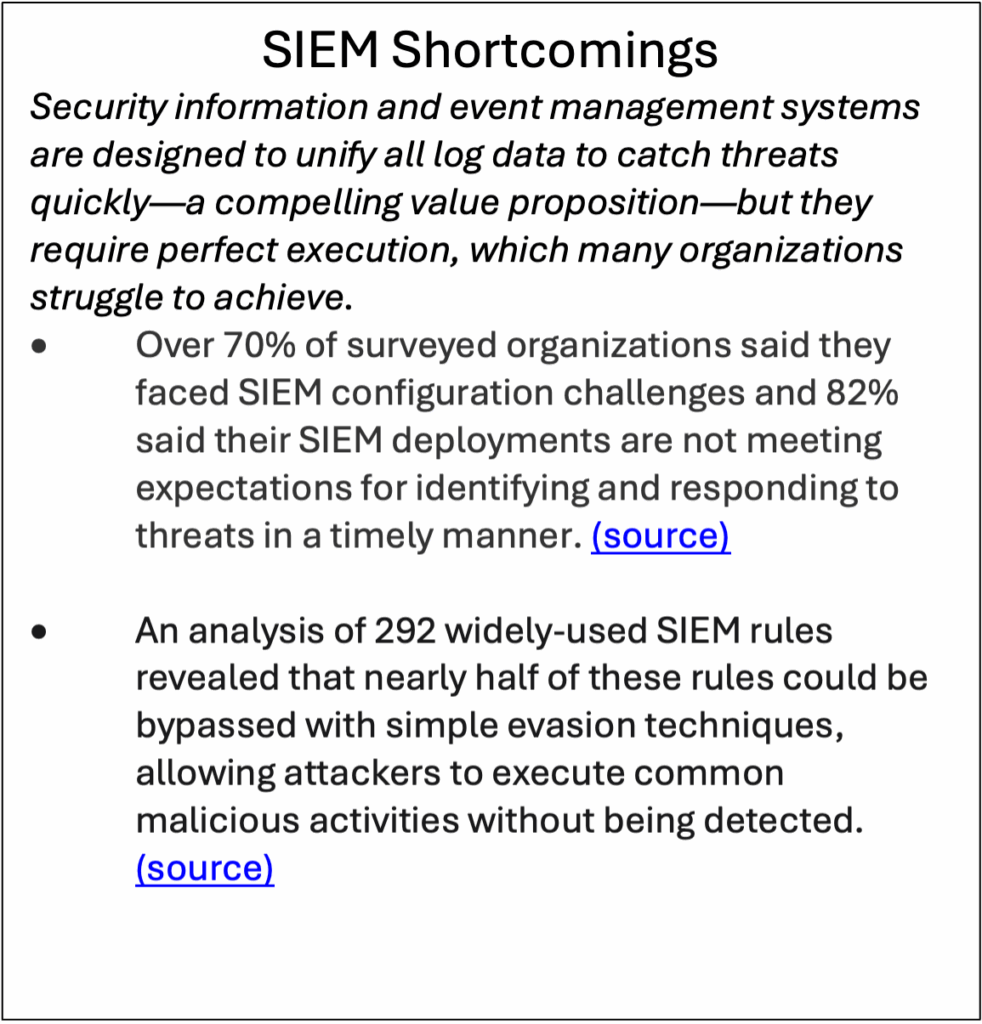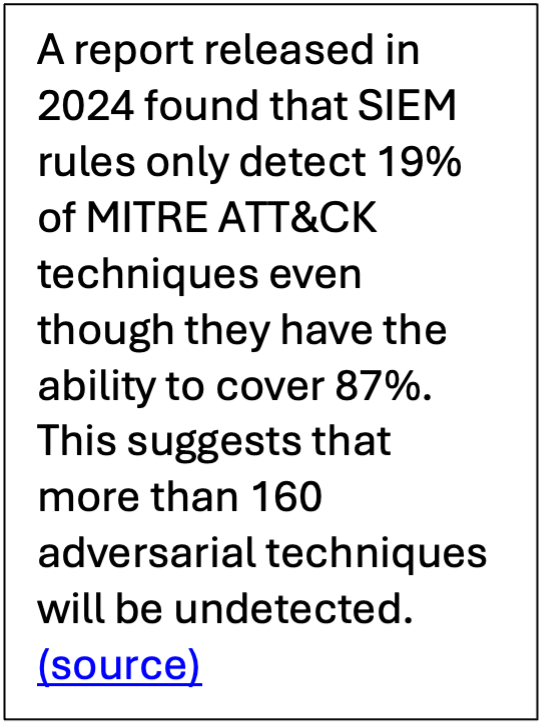
Live Network Packets: The Single Source of Truth for Cybersecurity
In cybersecurity, truth is found in the network traffic. That’s why cybersecurity professionals and network engineers have a well-known saying: packets don’t lie.
Live network packet data represents the actual traffic flowing through the network, making it one of the most reliable, unfiltered, and comprehensive sources of truth for detecting cyber threats. Whereas logs are far more vulnerable and can be made to “lie” or disappear altogether, even by a relatively unsophisticated attacker.
By monitoring live traffic packets instead of system- or device-generated logs, security teams have a more complete view of the network environment. For small and midsize businesses (SMBs) with limited IT staff and budgets, a cybersecurity tool that uses packet-based monitoring offers a simplified and cost-effective security solution without the fundamental shortcomings that often come with log-based approaches.
The Inherent Limitations of Log-Based Security

Log data is at the core of most cybersecurity tools, from basic antivirus software and firewalls to more sophisticated solutions like endpoint security and log management platforms. Logs provide the raw data that these tools collect and analyze to monitor activity and detect threats. However, relying on log data introduces some significant limitations, regardless of how advanced the security system may be.
To start, logs are only as good as their configuration, capturing the information they’ve been instructed to record and nothing more. By depending on this self-reporting, log-based tools operate under the assumption that systems and devices will accurately and comprehensively report their own behavior—an assumption that doesn’t always hold true, especially if a device or system has been successfully attacked.
Proper configuration is one of the biggest challenges for log-based security. It requires more than just turning on logging features, including selecting the right log sources, standardizing formats, applying retention policies, filtering out irrelevant data, and correlating events across multiple systems. Consequently, when configurations are incomplete or incorrect it is extremely difficult, if not impossible, to detect threats using log data.
In addition to configuration challenges, effective log monitoring requires extensive data collection from uncoordinated logs across the network, which creates substantial volumes of data. For SMBs without advanced tools or specialized expertise, sifting through large quantities of log entries to identify signs of compromise can be time-consuming, resource-intensive, and prone to error. Not surprisingly, the effort required to process, correlate, and analyze large volumes of fragmented log data also creates delays in threat detection, and latency issues like ingest lag are a problem for most log-based detection tools.
More concerning, attackers often target logs themselves, deliberately disabling, manipulating, or erasing logs to cover their tracks. Many off-the-shelf hacking tools include features to clear logs or suppress system logging. Furthermore, logs can provide attackers with reconnaissance data, including system vulnerabilities, user credentials, and potential points of privilege escalation. Personally identifiable information (PII) and other sensitive business information is also frequently found in logs.
Ultimately, if logging is misconfigured, manipulated, or limited by storage constraints, security-relevant events may never be captured. Likewise, if organizations don’t adequately protect logs, these records can become a liability that jeopardizes both privacy and overall security.
Direct vs. Indirect Observation: The Power of Packets for Superior Visibility
In network traffic analysis, security teams rely on two types of observation: direct and indirect. Direct observation means analyzing actual packets as they travel across the network to capture every conversation between devices and systems. Indirect observation, on the other hand, involves analyzing summaries and derived data from various sources, such as logs and flow records, rather than the raw packets themselves.
The direct observation approach of packet analysis is particularly valuable for network-connected devices that don’t generate useable logs, such as Internet of Things (IoT) devices, operational technology (OT), and Bring Your Own Devices (BYOD).
For example, an HVAC controller infected with malware won’t generate a log alert, but it will produce unusual activity that can be detected through direct observation of network traffic. Even if the malware disables antivirus tools or deletes log records, it can’t avoid communicating over the network to carry out its goals.
Similarly, packet monitoring can detect lateral movements inside the network that firewalls and endpoint security systems can’t see. Every network packet contains valuable metadata about communication patterns, connection frequencies, and unusual behaviors that often indicate malicious activity. By analyzing this metadata, monitoring tools can identify signs of lateral movement such as devices probing other systems or accessing data in unusual ways. These direct observations reveal anomalies as they happen, without having to wait for antivirus software to flag a suspicious file or relying on logs to capture suspicious activity.
The integrity of packet data is also important. Unlike logs, packets are difficult to modify or delete without leaving evidence. Sophisticated attackers may attempt to evade detection by traffic shaping or using encryption, but once traffic has been captured by a packet-based monitoring system, it becomes a permanent and authoritative record of network activity.
In short, if a device is active on the network, its communications leave a trail in the form of packets. If two systems exchanged data, packets prove it—even without access to encrypted content. This foundational truth offers a level of certainty that log-based systems, with their inherent limitations, often fail to deliver.
How CYBERSPAN® Elevates Packet-Based Monitoring
CYBERSPAN® does more than collect and review network packets—it transforms packet-based monitoring into a sophisticated, real-time, and actionable defense system tailored for organizations that lack large security teams.
The CYBERSPAN® platform is built on the powerful open-source Zeek network security monitoring framework, which converts raw packets into structured, context-rich logs about network activity. Zeek goes deeper than basic packet metadata analysis by also examining traffic at the application layer. This provides insights into network protocols through techniques like TLS/SSL handshake analysis, certificate inspection, and JA3/JA3S fingerprinting.

This rich, real-time stream of network data is key to CYBERSPAN®’s advanced threat detection capabilities. By analyzing this live stream with a combination of sophisticated machine learning and rule-based analytics, CYBERSPAN identifies behavioral patterns and traffic anomalies without decrypting payloads. Most traditional log-based systems cannot perform this level of real-time, deep network analysis and application-layer inspection.
The granularity and deep insights provided by application-layer data combined with the context from Zeek’s structured packet metadata allows CYBERSPAN® to generate explainable, actionable alerts that map directly to specific Tactics, Techniques, and Procedures (TTPs) in the MITRE ATT&CK™ framework. For example, when suspicious behavior is detected, CYBERSPAN® not only raises an alert but also identifies the corresponding ATT&CK TTP—such as lateral movement or reconnaissance—and suggests appropriate next steps. In contrast, many security information and event management (SIEM) tools claim ATT&CK compatibility, but their dependence on log data limits their ability to effectively map to TTPs.
Beyond its analytical strengths, CYBERSPAN®’s packet-based approach offers inherent security advantages over log-based systems, which are often vulnerable to manipulation. CYBERSPAN® operates passively by attaching a sensor to a network switch. It listens to a copy of the traffic without interfering with the flow or requiring endpoint agents. This out-of-band approach means there’s no easy way for attackers to detect or disable the sensor—its Packet Stream Interface doesn’t have an IP address and doesn’t respond to pings or scans like a regular device, making it effectively invisible.
As cyberattacks grow more sophisticated and stealthier, the fundamental limitations of log-based security create blind spots that attackers can exploit. CYBERSPAN® offers a different approach based on packet data to provide superior visibility and actionable threat detection. This empowers organizations, especially SMBs with limited resources, to effectively defend against modern cyber threats by shifting focus to the single source of truth—live network packets.